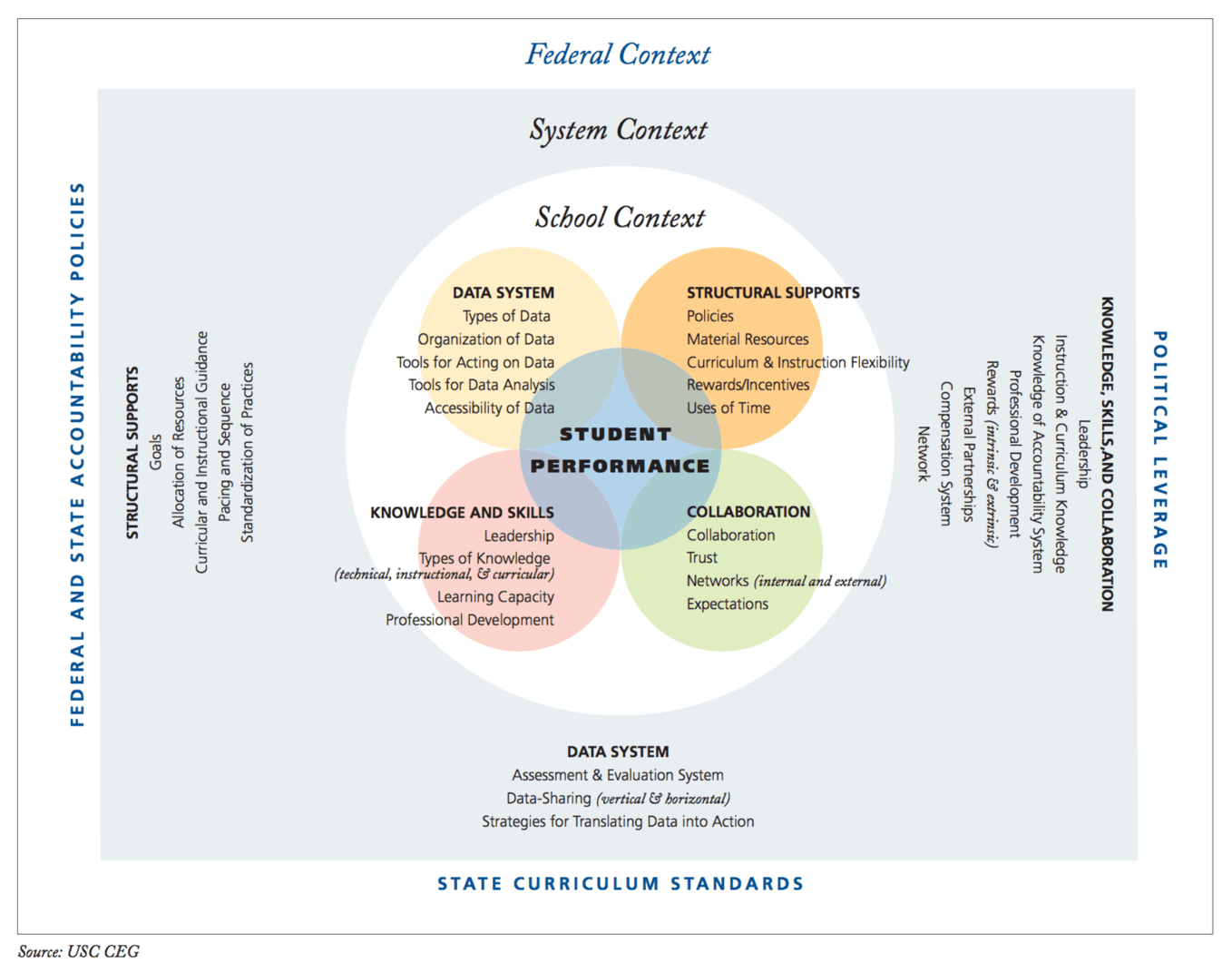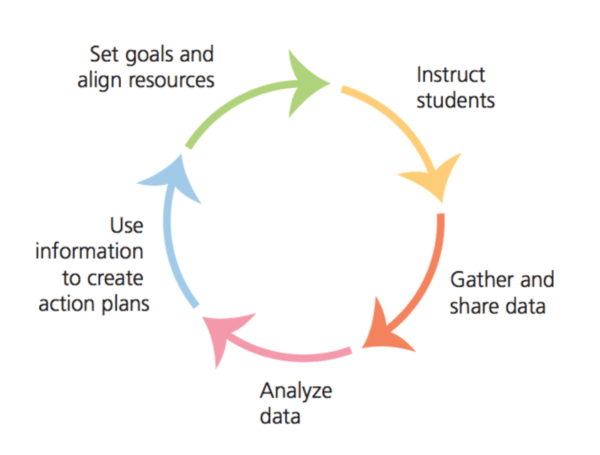Six Steps for School Leaders to Use Data Effectively
If school leaders want to lead the charge in improving student performance, they must be fluent in the use of data as a leadership tool.
The assumption is that when school leaders are knowledgeable about data use, they can more effectively review their existing capacities, identify weaknesses, and better chart plans for improvement. In fact, the effect size of principals promoting and participating directly with teachers in the formal and informal learning of the use of data to influence appropriate instructional activities was more than twice as powerful as any other leadership dimension.
Before school leaders can be effective, the entire school district must also engage in systemic actions to drive the change. Datrow, A., Park, V. and Wohlstetter, P. reported in their 2007 seminal article on performance-driven districts and schools that there are six key strategies that should be employed around data utilization to produce significant student achievement gains. I summarized these below:
- Building a Foundation for Data-Driven Decision Making
School districts must invest time and resources in building a solid foundation for performance improvements. A major aspect of this foundation is setting goals that are specific and measurable at all levels of the organization (e.g., district, school, classroom, student). A second foundational component is the development, monitoring and implementation of a coherent system-wide curriculum. Educators would then be able to gather, organize, discuss and act on similar and relevant data.
- Establishing a Culture of Data Use and Continuous Improvement
Leaders at the top levels of the organization establish clearly defined norms and expectations for data use. Accountability happens at the school level where principals follow through by reinforcing system expectations. There is mutual accountability between the district office and schools, which builds a commitment to continuous improvement.
- Investing in Data Management Systems
School districts generally do not have a dearth of student data. The common problem is that most student performance data is not organized and available in a comprehensible manner to be used effectively by staff. Performance-driven districts invest in an “open-data system” that will grow with their needs and manage all types of data (e.g., quantitative test scores, qualitative student data). The data system must make the data timely and accessible to ensure that the data is gathered and put to use. Districts must invest in dedicated personnel at the district level to assist schools with data management and use. In addition, most schools should designate well-respected staff (often the principal) as the local experts that teachers can turn to first for assistance.
- Selecting the Right Data
There are a number of data types for school districts to access. Of course, student assessment data is important, but performance-driven school districts also draw upon other whole child data to help in the continual improvement cycle. By using a system with a mix of data, districts are able to apply the information for instructional, curricular, resource allocation and planning decisions.
- Building School Capacity for Data-Driven Decision Making
The four key strategies that performance-driven districts employ to build system-wide capacity are: (1) Investing in job-embedded professional development around assessment and data (2) Providing support for staff in how to use data and modeling data use during discussions (3) Providing systematic time for teacher collaborations, and (4) Connecting educators “across schools” to share data and improvement strategies.
- Analyzing and Acting on the Data to Improve Performance
School systems must develop tools and processes to help principals, teachers and other staff members act on data. It's important to provide immediate feedback to schools on student achievement and progress toward goals. Districts that create explicit data analysis protocols and goal-monitoring reports for principals and teachers achieve the greatest improvements when combined with a recursive cycle of continual improvement.
Below is a conceptual framework (Fig. 1) from the University of Southern California that highlights the macro-district and school-level enablers of data-driven decision making. Combined with the more micro-cycle of instructional improvement cycle (Fig. 2), performance-driven districts can achieve increased student performance.
Figure 1:

Figure 2:

The literature is unequivocal: student performance is greatly enhanced by effective school leadership. One of the key dimensions of school leadership involves using student data to drive decision making at all levels of the organization.
When school leaders set goals for data use, create the infrastructure and provide teachers the tools to use data, the results can mean greatly enhanced student performance outcomes.
Sources:
Butler, L. (2009). Charter schools, data use, and the 21st century. Unpublished doctoral dissertation. Los Angeles, CA: University of Southern California.
Datnow, A., Park, V., & Wohlstetter, P. (2007). Achieving with data: How high-performing school systems use data to improve instruction for elementary students. Los Angeles: University of Southern California, Rossier School of Education, Center on Educational Governance.
Earl, L., & Katz, S. (2006). Leading schools in a data-rich world. Thousand Oaks, CA: Corwin Press.
Marzano, R., Waters, T. & McNulty, B. (2008) School Leadership that Works: From Research to Results. Alexandria, Va: Association for Supervision and Curriculum Development.
Sharratt, L. & Fullan, M. (2012). Putting Faces on the Data: What great leaders do. Corwin Press
*****
Illuminate Education is a provider of educational technology and services offering innovative data, assessment and student information solutions. Serving K-12 schools, our cloud-based software and services currently assist more than 1,600 school districts in promoting student achievement and success.
Ready to discover your one-stop shop for your district’s educational needs? Let’s talk.



Very timely article for our district. We could use more direction.
Thanks
hi! Thanks for article
Very helpful article!
To run a school effectively leaders should be lead from the front these steps help to run school smoothly.
Best Regards
FeKara
A free school software
Hi,
Explained well, I agree with your points. There is no doubt that electronic school management is the best software to manage data of school under one roof. Keep sharing.
School management software is one of the best tools to enhance productivity and for the better school management system of any educational institute.